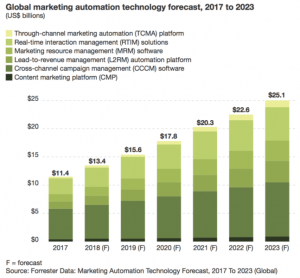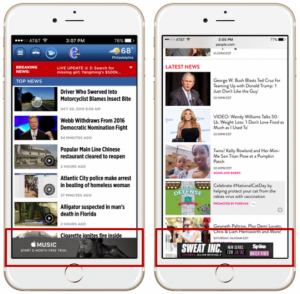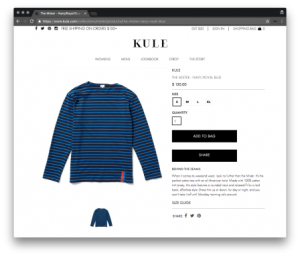65% of customers say a positive brand experience is more influential than great advertising.
“Why is marketing struggling with customer experience?” asked Blueshift co-founder and CEO Vijay Chittoor. “Why is it not easy for every marketer to just create human centric experiences? After all, everyone wants to do that. We believe every marketer really wants to connect with their customer.”
By personalizing and scaling brand interactions like never before, AI can help brands create a human-centric customer experience. Chittoor explained how during a session at The MarTech Conference.
The answer, he said, is in part because there are so many customer touch points.
“Ten, 15 or 20 years back the only way you could proactively engage your customers was through channels like email,” Chittoor said. “But today more and more channels have become engagement channels. … It’s very hard for marketers to think about millions of individualized personalized experiences. And all of that is further hampered by an incomplete understanding of customers.”
Intrusive instead of helpful
Because of that it’s easy for marketing to become intrusive, instead of helpful. And that’s a problem. Blueshift’s research found that 65% of customers say a positive brand experience is more influential than great advertising. On the other hand, 32% of customers say they will walk away from a brand they love after just one negative experience.
“Every time marketers, or any other function in the customer experience realm, annoys the customer,” he said, “it creates some kind of friction, and shows that they don’t truly understand that customer.”
This is where AI becomes invaluable.
As a marketer, your job is to deliver the next best experience to each and every customer. AI lets you scale that by taking care of the who, what, when and where of customer connection.
Who to target: “How do we segment customers with precision? how do we know where they are in their self directed customer journey?”
What to recommend: “What do we say in our message? Should we put an offer in front of them? Should we put another piece of content? Should we try to sell them product? Should we try to advance that customer journey in some form?”
When to engage: “It’s an always-on world. People are always connected, but what is the right time at which they are really responsive to your messages? What’s the right time at which you can interrupt them without annoying them becomes very, very critical.”
Where to connect: “On this omni-channel, customer-journey engagement cycle, … you have so many digital channels, but you also have a ton of offline channels and human assisted channels.”
Chittoor pointed out that AI can answer those questions individually for thousands and thousands of customers at once. For example, instead of relying on generic marketing content, AI uses all the information to make predictive recommendations. Previously contact would happen when it best suited marketers, like the old spray-and-pray method which meant sending a batch of messages at 8 AM to millions of customers. This changes with AI which can determine best times to send materials based on peoples’ online behaviors.
The results are in the numbers and the numbers are staggering. He pointed to bedding brand Tuft and Needle, which increased its email revenue by 181%. Similarly, clothing brand Jumper increased leads, which are an indicator of revenue, by 384%, while Carparts.com increased engagement by 400%.
“Forrester Research quantifies the impact of AI-driven engagement on so many different channels” Chittoor said. “And they were talking about how the average customer is seeing $ 128 million revenue lift and a 781% ROI by using AI and the AI-based targeting is the most important part of that.”
The post How AI lets marketers create human-centric CX at scale appeared first on MarTech.
MarTech(27)
Report Post







